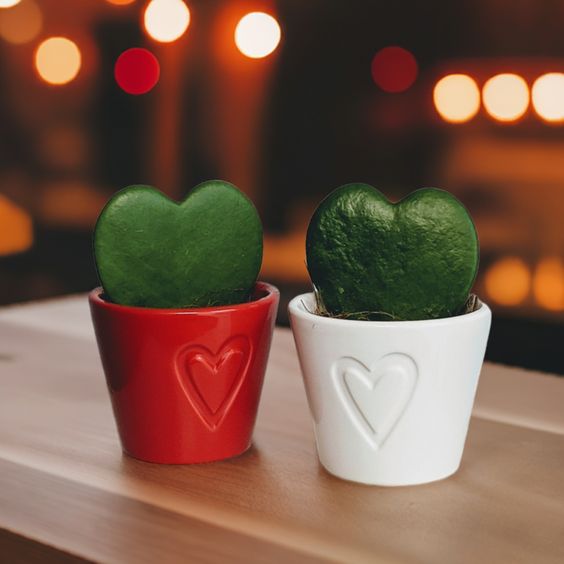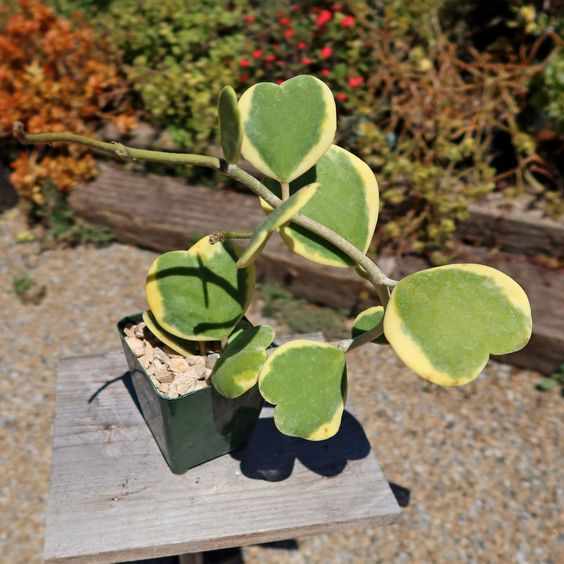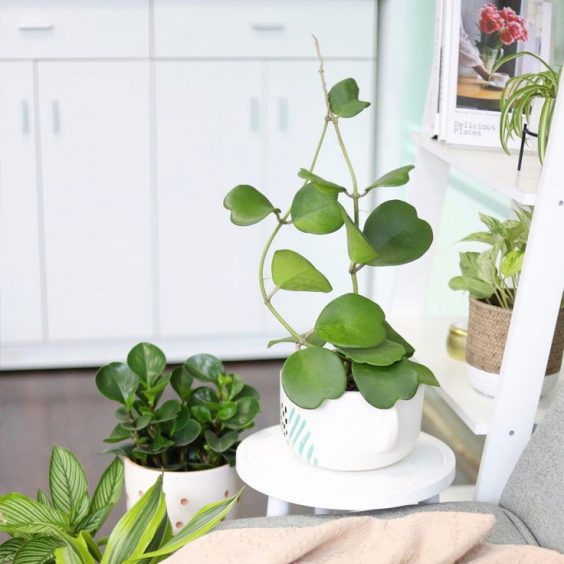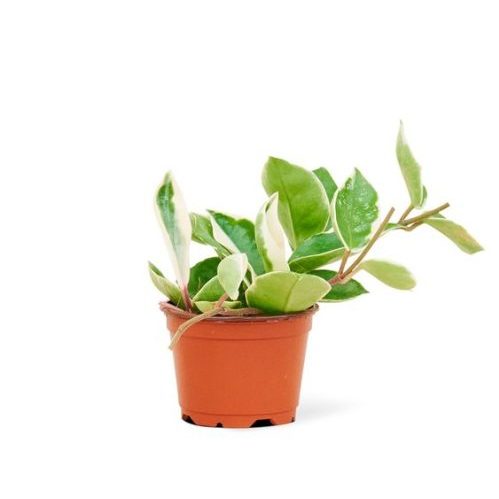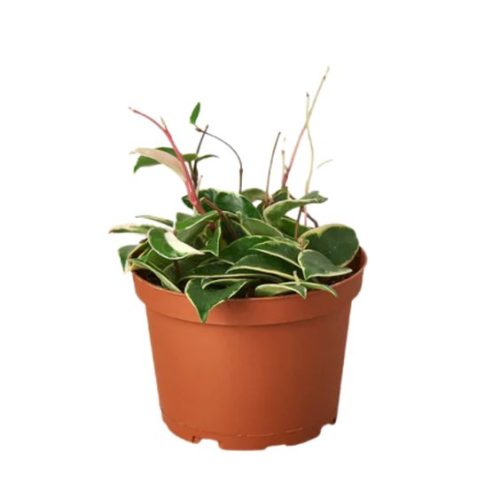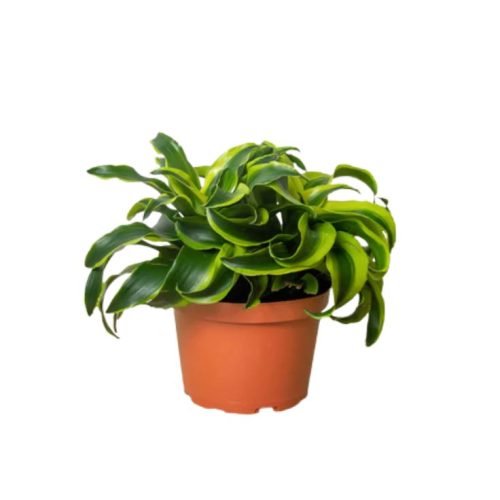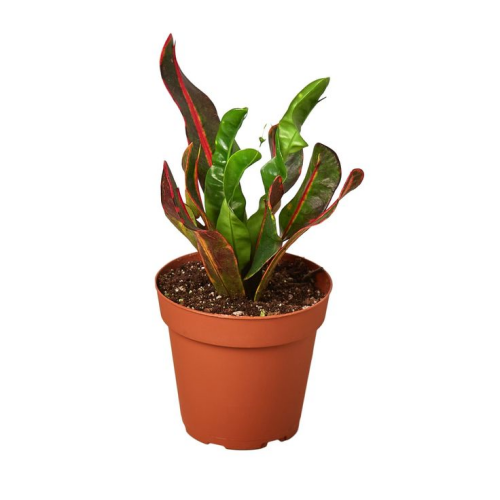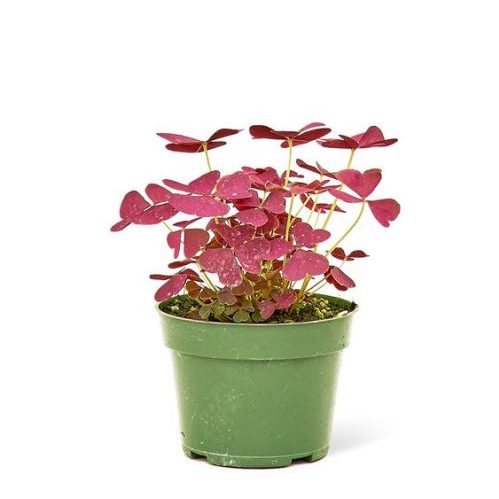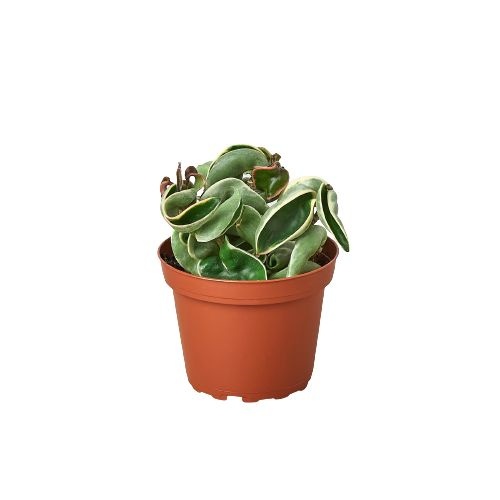Hoya kerrii
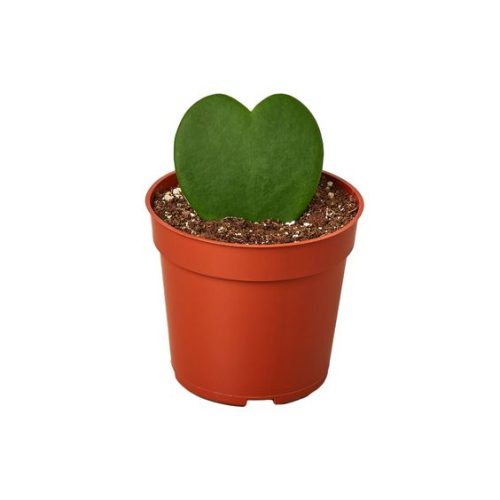
- Botanical Name: Hoya Kerrii Craib
- Family Name: Apocynaceae
- Stems:: 6+ feet
- Temperature: 10-27°C
- Other: Bright light, warm winter.
Overview
Hoya kerrii, known as Sweetheart Hoya, is a tender evergreen vine with heart-shaped leaves and fragrant, star-shaped flowers, cherished for its romantic appeal and easy indoor cultivation.
Product Description
Hoya kerrii: The Sweetheart of Houseplants
Imagine a plant that quite literally wears its heart on its sleeve—a plant that exudes charm and romance with every lush, heart-shaped leaf. Hoya kerrii, affectionately known as the Sweetheart Hoya or Valentine Hoya, is just such a plant. It’s a tropical treasure native to the verdant rainforests of Southeast Asia, where it weaves its way through the canopy, adorning tree trunks with its heart-shaped love notes. As a member of the Apocynaceae family, this evergreen vine is a slow yet steady grower that offers an abundance of beauty with just a touch of care.
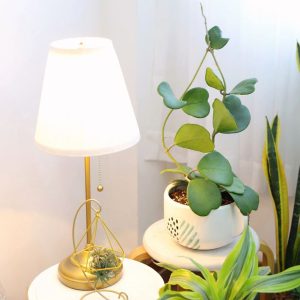 Morphological Characteristics: Leaves of Love
Morphological Characteristics: Leaves of Love
The allure of Hoya kerrii begins with its foliage. Each leaf is a succulent heart, a symbol of affection in a botanical form. They are thick and glossy, with a vibrant green hue that seems to glow with life. But it’s not just the shape that captures the heart; it’s the way these leaves grow in pairs along the vine, as if they were destined to be together. When the plant reaches maturity, it offers more than just foliage—it blooms. The flowers are a delightful surprise, clusters of star-shaped blossoms in white and pink, with a central corona that can range from red to burgundy. These flowers are not only a visual feast but also a fragrant one, releasing a sweet scent that can fill a room.
Growth Habits and Care: Tending to the Heart
Hoya kerrii is a plant that thrives in warmth and is sensitive to the cold, making it a perfect indoor companion for those in USDA zones 11-12. It’s a plant that prefers to bask in the glow of bright, indirect light, reaching for the sun without risking the burn of direct rays. When it comes to soil, Hoya kerrii is particular, desiring a well-draining mix that allows its roots to breathe and prevents the stagnation that can lead to rot. Watering should be a dance with the seasons, with more frequent waterings in the growing season and a conservative approach in winter, when the plant rests.
Fertilizing Hoya kerrii is akin to feeding a loved one—a little nourishment goes a long way. A balanced, water-soluble fertilizer applied sparingly during the spring and summer can encourage growth and the production of those coveted flowers. But like any good relationship, it’s not just about the giving; it’s about knowing when to hold back, and Hoya kerrii asks that you refrain from fertilizing during the winter months.
Propagation and Honors: The Heart Grows Fonder
To propagate Hoya kerrii is to understand the true meaning of patience. It’s a process that begins with a single leaf or a stem cutting, placed in soil that’s been prepared with love and care. It takes time for the roots to form, for the plant to begin its journey from a single heart to a vine laden with them. But the wait is worthwhile, for from this small start, a plant that will undoubtedly become a cherished member of your indoor garden can grow.
Despite its delicate appearance, Hoya kerrii is a hardy plant. It’s non-toxic to humans and pets, making it a safe choice for homes with curious children or furry friends. And while its spines may offer a slight prick if not handled with care, it’s a small price to pay for the joy this plant brings.
The recognition of Hoya kerrii by the Royal Horticultural Society with an “Award of Garden Merit” is a testament to its resilience and beauty. It’s a plant that gives and gives, offering its heart-shaped leaves and fragrant flowers to those who tend to it with love and care.
Hoya kerrii Care FAQs
- Hoya kerrii Care FAQs They need bright indirect light, well-draining soil, and temperatures between 65°F and 80°F. Water when soil is dry.
- How to propagate? Take stem cuttings with nodes, let dry, and plant in well-draining soil.
- Why are leaves yellowing? Check for overwatering, direct sun, or insufficient light.
- Do they bloom? Yes, with enough light and well-drained soil.
- Pests or diseases? Resistant, but avoid overwatering to prevent root rot.
- Safe for pets? Yes, non-toxic to household pets.
